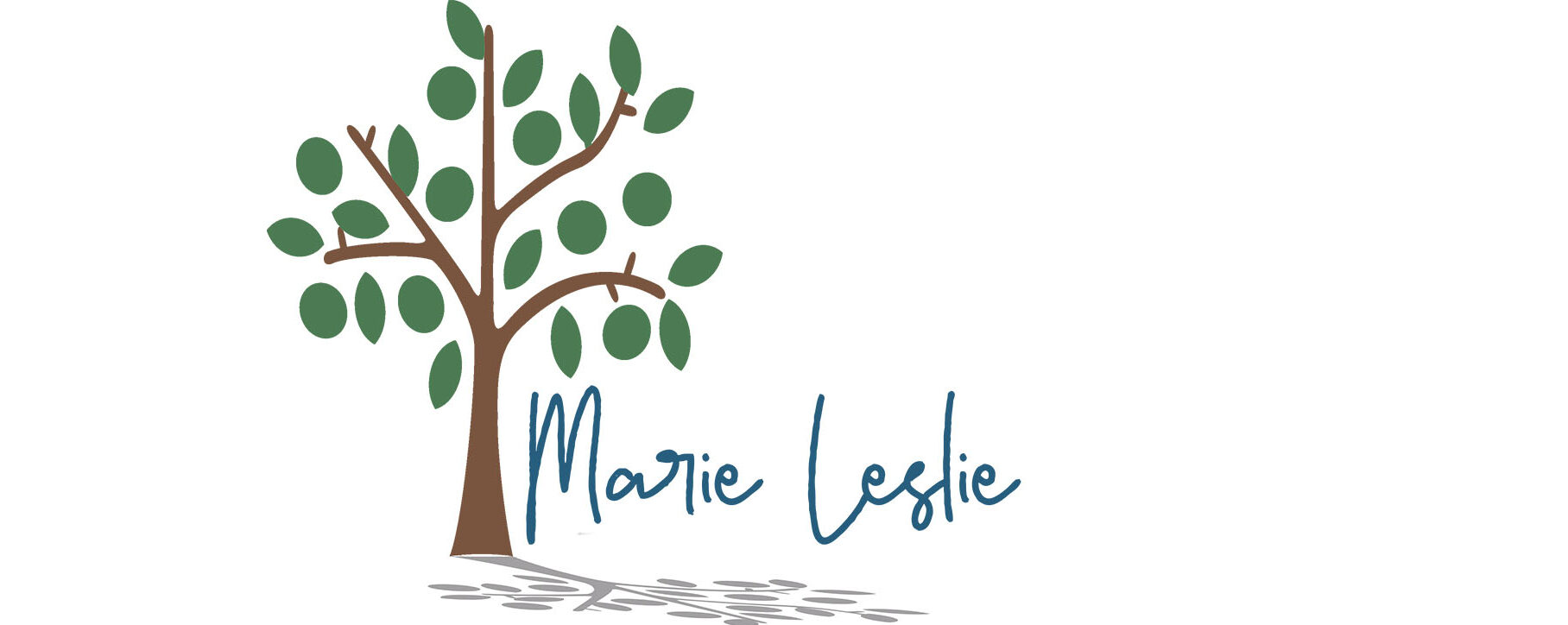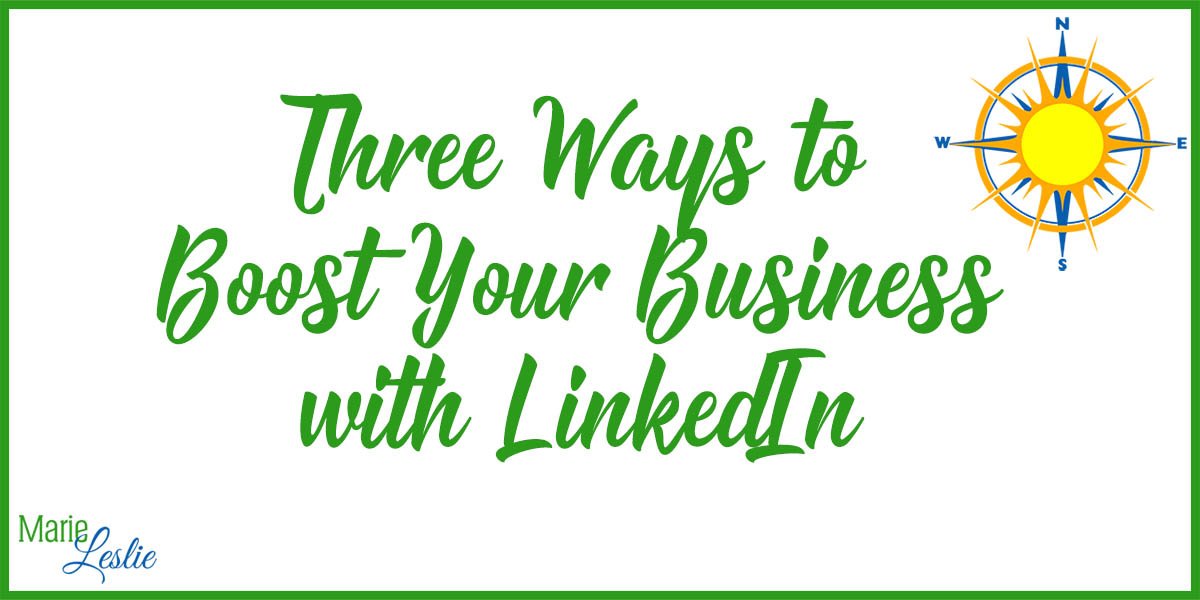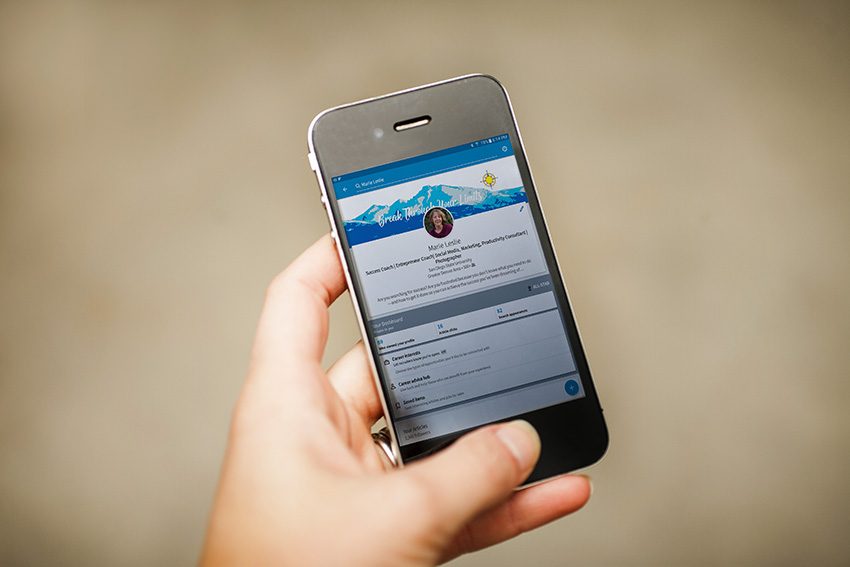3 Ways to Boost Your Business with LinkedIn
I’ve been a LinkedIn user for nearly a decade now and have found it one of the best online tools for building my business and making productive business connections. I’m always surprised at those who don’t use LinkedIn and don’t see the value in it.
I often hear comments like “It’s only for job hunting,” or “I don’t want people to sell me stuff,” or “It’s just another Facebook.”
LinkedIn can be very useful to make connections if you’re in the job market, but it isn’t a job search site.
You can gain new sales clients and find things to buy through LinkedIn connections but it isn’t a sales site, either.
You can connect with friends on LinkedIn but it definitely isn’t Facebook. I’ve heard LinkedIn described as the Facebook of the business world, but that isn’t completely accurate. There are no games and, as a rule, little of the gossip and chit-chat that characterizes Facebook. While there are those who make posts that are probably better suited to Facebook, most of the posts in my feed have some relationship to the business world, or to creating business relationships.
While I’m not an open networker and am not in a competition to rack up the LinkedIn numbers, my LinkedIn network continues to grow and I’ve gained a number of quality clients through LinkedIn, more than I have gotten through Facebook, Twitter or even my website—and I’ve received only a very few unsolicited sales pitches.
Here are three easy ways to boost your business with LinkedIn.
Complete Your LinkedIn Profile
Put in your business profile, your work experience, your skills, and what you’d like potential employers, employees, customers and business associates to know about why they want to connect with you. Think of it as your “elevator speech” expanded. Get creative (but be honest). I’m a small business owner and have been for more than 20 years. Yes, you could just cut and paste your resume if you want—that’s a start, but focus on making it readable and making yourself attractive. Even if you’re job hunting, you’re allowed to be interesting and let your sparkling personality show through. You don’t need to be quite as formal or terse as a traditional resume or CV.
When completing your profile, use your keywords, just like you would if you were creating a website or blog and wanted people to be able to find you through a web search. People can do profile searches on LinkedIn and having keywords that pertain to your industry and interests will help the right people find you.
I recently had an employer tell me they found their last three employees through LinkedIn searches, including one who had a much-desired but uncommon certification the employer had been seeking, and had been unable to find even with the help of a recruiter.
In your name field, put your name—and any professional designations. Don’t get cute here: LinkedIn says it’s for names, not advertising. No “LION”, no job descriptions, no “hire me.”
Get a profile picture. Make sure it’s professional. Save the vacation snapshots and you with a margarita for Facebook; this is a PROFESSIONAL network so make sure you look like one. That doesn’t necessarily mean a formal suit-and-tie headshot, it just means you should be the only one in the picture, it should be close up enough to see who you are and it shouldn’t be your company logo (that violates LinkedIn’s TOS). If you want to know more about business portraits, read this.
Connect on LinkedIn with People You Know
As soon as you’ve completed the profile, use LinkedIn’s mail search feature to find all the potential LinkedIn contacts you already have lurking in your inboxes. You can allow LinkedIn to search your email account (they don’t send anything out or use that information in any other way that I have ever found) to show you who you already know on LinkedIn. These are the people you should consider connecting with first.
Speaking of connection invitations, make it personal. You can send someone an invitation automatically and LinkedIn will send a generic one-liner on your behalf. Oh, joy. There’s just nothing like receiving a completely impersonal connection request in my inbox to make me feel like someone’s notching their LinkedIn belt. If I don’t already know you and don’t instantly see a reason to connect, and you haven’t given me one, I’m probably going to say no. Yes, there are spammers on LinkedIn, and there are people who randomly connect for less-than-ethical reasons.
When I am connecting, I write a brief personal note, including the person’s name, in the invitation box. If it’s not someone I already know well, I will tell them how I know them and invite them to connect, something like “I heard you speak at the ABC Networking Event and I’d like you to become a part of my network.” Not fancy but better than the LinkedIn default.
When someone accepts my connection request or I accept theirs, I send an introductory email. There is no point in connecting if they’re just going to be a name on your list. I thank people for connecting with me and let them know who I am, what I do and invite them to contact me if I can answer questions in my field of expertise. I also ask how I can help them grow their business. While I obviously don’t work for free, I do believe in paying it forward and sharing information. Many times I will connect with people who have a question about something I’ve already answered in a blog post and it’s simple to direct them there for answers. I invite people to connect through Twitter and my Facebook pages, allowing them to learn more about who I am and what I do and to become a resource for them just as I hope they might become a resource for me.
You should have at least some connection to the people you’re inviting. LinkedIn discourages completely random and anonymous connections. LinkedIn gives you 3000 invitations (seems like a lot, but it really isn’t); if you use them all up, you just ask for more and they will give you 500 more at a time.
A large LinkedIn network is a good thing. You never know who you will meet and who they might know who might be a good fit for you and your business. While I focus on connecting with people who I would potentially do business with, I accept invitations from many people, regardless of their geographic location, as long as the connections make sense. I have connected with bloggers, photographers and other small business owners from around the world, and some of them have led to business opportunities.
Participate in LinkedIn Groups
Once you’ve invited everyone you know, start getting to know people. LinkedIn’s groups are one of its best features. Find a group some groups that fit your interests and begin participating. You can be in up to 50 groups, but remember to consider the time you have to spend. Some groups are very active, some not so much.
These groups are great for making not only local business connections, but connecting with LinkedIn members in other places and connecting with those who may be potential customers but aren’t people who you would otherwise have an opportunity to connect with. Participating in focused groups on a regular basis can help you build your credibility and establish expertise in your niche. Some groups are very active, and others are less so.
One of the nice things about group memberships is that you can control how you receive notifications. Getting a daily summary for the groups I use most and a weekly summary for the others saves me from having to surf all the groups I belong to every day. I can skim the list for new conversations, topics and announcements that interest me and choose whether I need to visit the group that day. When commenting on a thread, you can choose whether to get individual e-mail replies or not. Some threads get hundreds of replies and others get only a few. If you want to stop the flow of replies, you can do it through the group settings.
These are just three of the many ways you can boost your business with LinkedIn. If you really want to become an expert on LinkedIn and learn to leverage it for maximum business success, I recommend checking out some of the LinkedIn training offered by experts like Joyce Feustel at Boomers’ Social Media Tutor.
And if you’re on LinkedIn and we haven’t connected yet, you’ll find me here. Just be sure and include that note so I’ll know how you found me.









I have some friends who are getting a lot of leads from content marketing on LI. I’ve never used the platform much, but will take another look. Great post.
Thanks, Stacey. I think you could do very well getting leads through LI. I would definitely recommend a closer look.